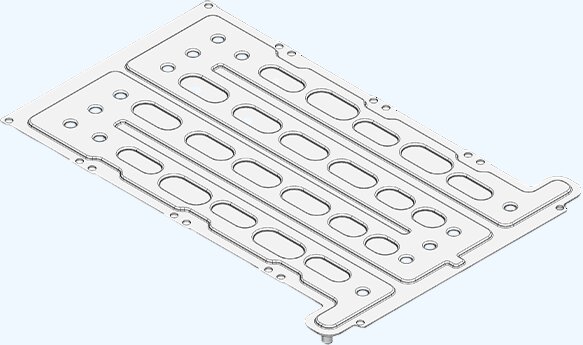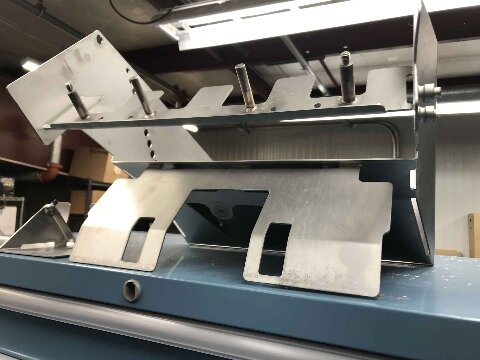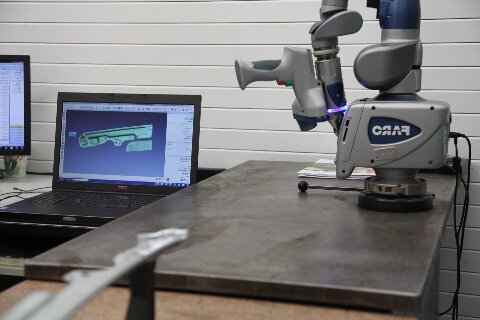Prototyping can be a roadblock for many businesses striving to bring ideas to life. The challenge lies in balancing speed, precision, and cost while ensuring the design meets functional requirements. Sheet metal prototyping offers a practical solution, enabling engineers and manufacturers to test and refine their designs before committing to full-scale production.
Want to know the specific details about sheet metal prototyping methods and their applications? In the upcoming sections, I will break down the key aspects.
What Is Sheet Metal Prototyping?
Sheet metal prototyping transforms design concepts into testable metal parts. It bridges the gap between digital designs and physical products.
Definition and Basic Concepts
Sheet metal prototyping is the process of creating physical models or samples of products using sheet metal materials. These prototypes are fabricated to test and validate a product’s design, functionality, and manufacturability before moving into full-scale production.
The process typically involves techniques such as laser cutting, CNC bending, welding, and forming to create parts that closely resemble the final product. Prototyping allows manufacturers to identify design flaws, optimize production methods, and ensure the product meets performance requirements.
Differences Between Prototyping and Full-Scale Production
The primary distinction between prototyping and full-scale production lies in their purpose and scale:
| Aspect | Prototyping | Full-Scale Production |
|---|---|---|
| Purpose | Testing design, functionality, and manufacturability | Mass production for end-use |
| Quantity | 1–25 units (typically) | Hundreds to thousands of units |
| Flexibility | High; allows for design changes | Low; optimized for efficiency |
| Cost Per Unit | Higher due to setup and customization | Lower due to economies of scale |
| Lead Time | Shorter for initial development | Longer setup but faster for large quantities |
Importance of Prototyping in the Product Development Cycle
Prototyping is a critical step in product development as it enables:
- Validation & Testing: Designers use prototypes to verify the functionality of the design.
- Time & Cost Efficiency: Identifying mistakes in the prototyping phase can help save resources.
- Communication with Stakeholders: A tangible prototype is more accessible to modify and discuss than an abstract concept.
Common Applications for Sheet Metal Prototypes
Sheet metal prototypes are widely used across various industries for diverse applications:
- Automotive: Brackets, enclosures, and interior trim components.
- Aerospace: Lightweight structural parts and precision brackets.
- Medical Devices: Enclosures, brackets, and components requiring sterility.
- Consumer Electronics: Housings, panels, and frames.
- Construction Materials: Custom brackets, supports, and fixtures.
- Household Appliances: Panels, frames, and structural components.
Benefits of Sheet Metal Prototyping
Sheet metal prototyping offers a practical way to refine designs, reduce costs, and accelerate production timelines. Let’s explore its key benefits and how it supports efficient product development.
Speed and Efficiency in Product Development
Sheet metal prototyping significantly accelerates product development. Advanced technologies like CNC machining and laser cutting allow prototypes to be fabricated quickly and precisely.
Cost-Effective Solutions for Initial Testing
Prototyping with sheet metal is cost-effective, especially during the early stages of product development. It minimizes expenses by identifying design flaws before committing to costly full-scale production.
Customization and Flexibility in Design
Sheet metal prototyping offers unparalleled customization and flexibility. Engineers can experiment with complex geometries, intricate designs, and materials to meet specific project requirements.
Risk Mitigation in the Design Process
It helps identify potential issues early, reducing the likelihood of costly errors or recalls later. Providing a tangible model for evaluation ensures that the final product meets performance standards and customer expectations.
Sheet Metal Prototyping Methods
Modern prototyping combines advanced technology with proven manufacturing techniques. These methods each serve specific project requirements and design goals.
3D Printing
3D printing, or additive manufacturing, has become a valuable tool in sheet metal prototyping. It allows the creation of complex and detailed prototypes by layering materials.
Standard Metal Fabrication Methods
Standard metal fabrication methods remain essential for sheet metal prototyping due to their versatility and reliability. These include:
- Cutting: Techniques like laser, waterjet, and plasma cutting offer precision and speed for creating 2D shapes.
- Forming: Processes such as bending, coining, and rolling shape the metal into desired designs.
- Assembling: Methods like welding, riveting, or bolting join components together.
- Surface Finishing: Techniques such as painting, anodizing, or polishing enhance the prototype’s appearance and durability.
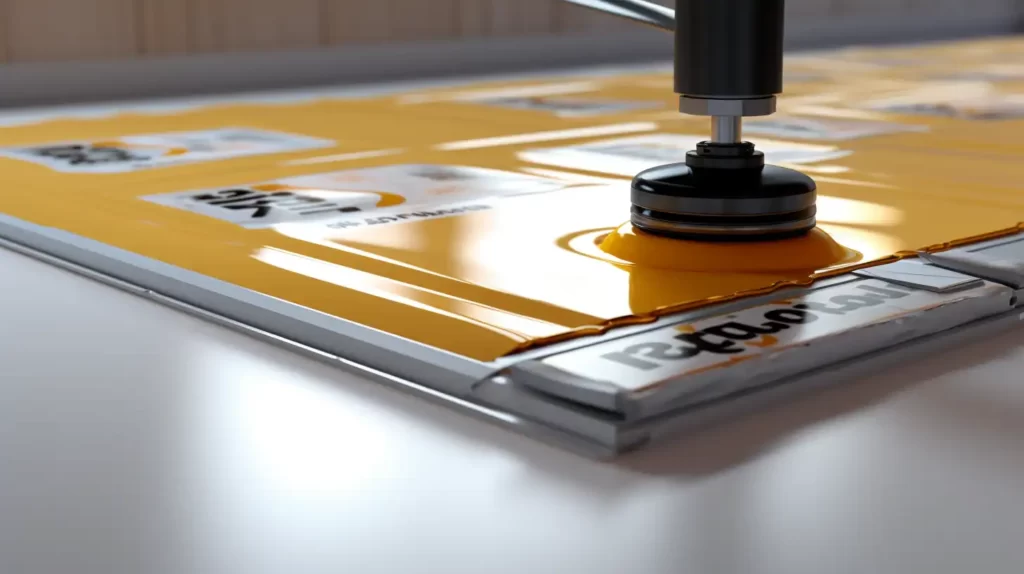
How Does Sheet Metal Prototyping Work?
Here’s a step-by-step breakdown of the sheet metal prototyping process:
Step 1: Design and Planning
Begin by creating a detailed design using CAD (Computer-Aided Design) software. This digital model includes all the prototype’s dimensions, tolerances, and features.
Step 2: Material Selection
Choose the appropriate sheet metal material based on the prototype’s intended use.
Step 3: Cutting
Cut the sheet metal into the required shape using precision methods such as laser, waterjet, or plasma cutting.
Step 4: Forming and Bending
Shape the cut metal into its desired form using bending, coining, or rolling techniques.
Step 5: Assembly
To create a complete prototype, join individual components through welding, riveting, or bolting.
Step 6: Surface Finishing
Apply surface treatments such as painting, anodizing, polishing, or plating to enhance appearance and durability.
Common Sheet Metal Materials Used in Prototyping
Choosing the right material is crucial for successful sheet metal prototyping. Here are some common types of material:
- Aluminum
- Stainless Steel
- Mild Steel
- Galvanized Steel
- Copper
- Brass
- Magnesium
Each material offers unique properties tailored to specific prototyping needs.
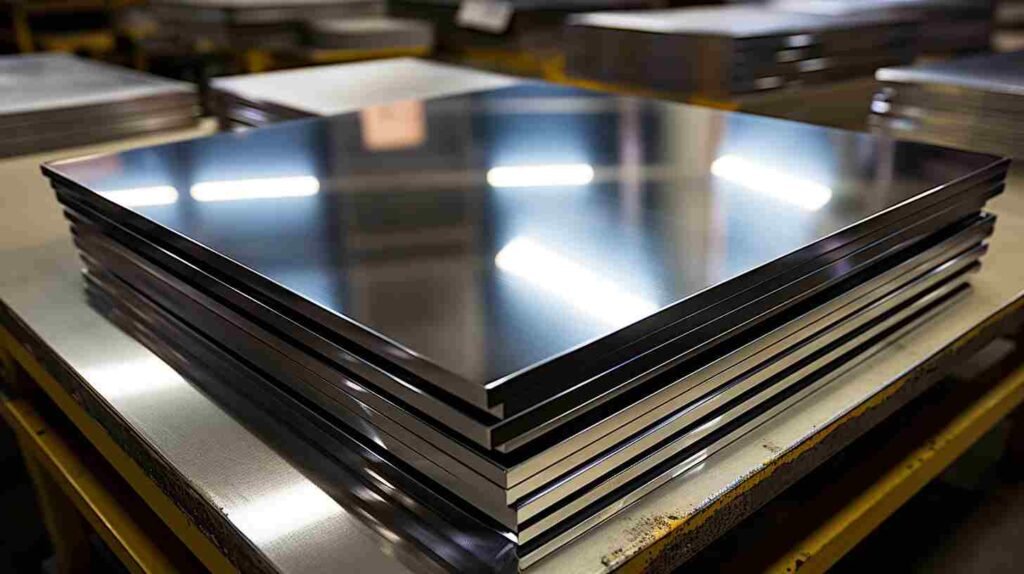
Best Design Practices When Fabricating Sheet Metal Prototypes
Designing for sheet metal prototyping requires precision and careful planning to ensure manufacturability and functionality. Let’s explore essential design practices that can streamline fabrication and improve prototype quality.
Maintain Proper Bend Radius
Ensure the bend radius equals or exceeds the sheet metal thickness. This simplifies fabrication and prevents material cracking.
Position Features Away from Bends
To avoid deformation during bending, keep holes, slots, and other features at least four times the material thickness away from bend lines.
Use Uniform Wall Thickness
Design parts with consistent wall thickness to simplify manufacturing and reduce the risk of warping or structural weaknesses.
Optimize Hole Sizes
Make hole diameters equal to the sheet metal thickness to prevent tool damage and ensure clean cuts.
Simplify the Design
Avoid overly complex geometries. A simpler design reduces tooling costs, shortens lead times, and improves manufacturability.
Assign Critical Tolerances Only
Apply tight tolerances only to features essential for functionality. Over-specifying tolerances increases costs unnecessarily.
Choosing a Sheet Metal Prototyping Service Provider
Selecting the right sheet metal prototyping partner can make or break your product development timeline and budget. Here’s what to consider when evaluating potential service providers.
What to Look for in a Prototyping Partner
- Experience and Expertise: Choose a provider with proven experience in sheet metal prototyping, especially in your industry.
- Technology and Equipment: Ensure the provider uses advanced tools like CNC machines, laser cutters, and 3D printers for precision and speed.
- Design Support: A good partner offers design-for-manufacturability (DFM) guidance to optimize your prototype for production.
- Flexibility: Look for a company that can handle custom designs and adapt to changing project requirements.
- Reputation: Check client reviews, testimonials, and case studies to gauge their reliability and performance history.
Evaluating Service Quality, Lead Time, and Cost
- Quality Assurance: Verify their quality control processes, including inspections and testing, to ensure prototypes meet your specifications.
- Lead Time: Assess their ability to deliver prototypes quickly without compromising quality—critical for staying on schedule.
- Cost Transparency: Compare pricing structures and ensure there are no hidden fees.
By carefully evaluating these factors, you can select a prototyping partner that aligns with your project goals while ensuring efficiency, precision, and cost-effectiveness.
Conclusion
Sheet metal prototyping is vital in product development, offering speed, flexibility, and cost efficiency. You can achieve high-quality results by following best practices and choosing the right partner.
Ready to bring your ideas to life? Contact us today to discuss your project and get a personalized quote!
Hey, I'm Kevin Lee

For the past 10 years, I’ve been immersed in various forms of sheet metal fabrication, sharing cool insights here from my experiences across diverse workshops.
Get in touch

Kevin Lee
I have over ten years of professional experience in sheet metal fabrication, specializing in laser cutting, bending, welding, and surface treatment techniques. As the Technical Director at Shengen, I am committed to solving complex manufacturing challenges and driving innovation and quality in each project.

